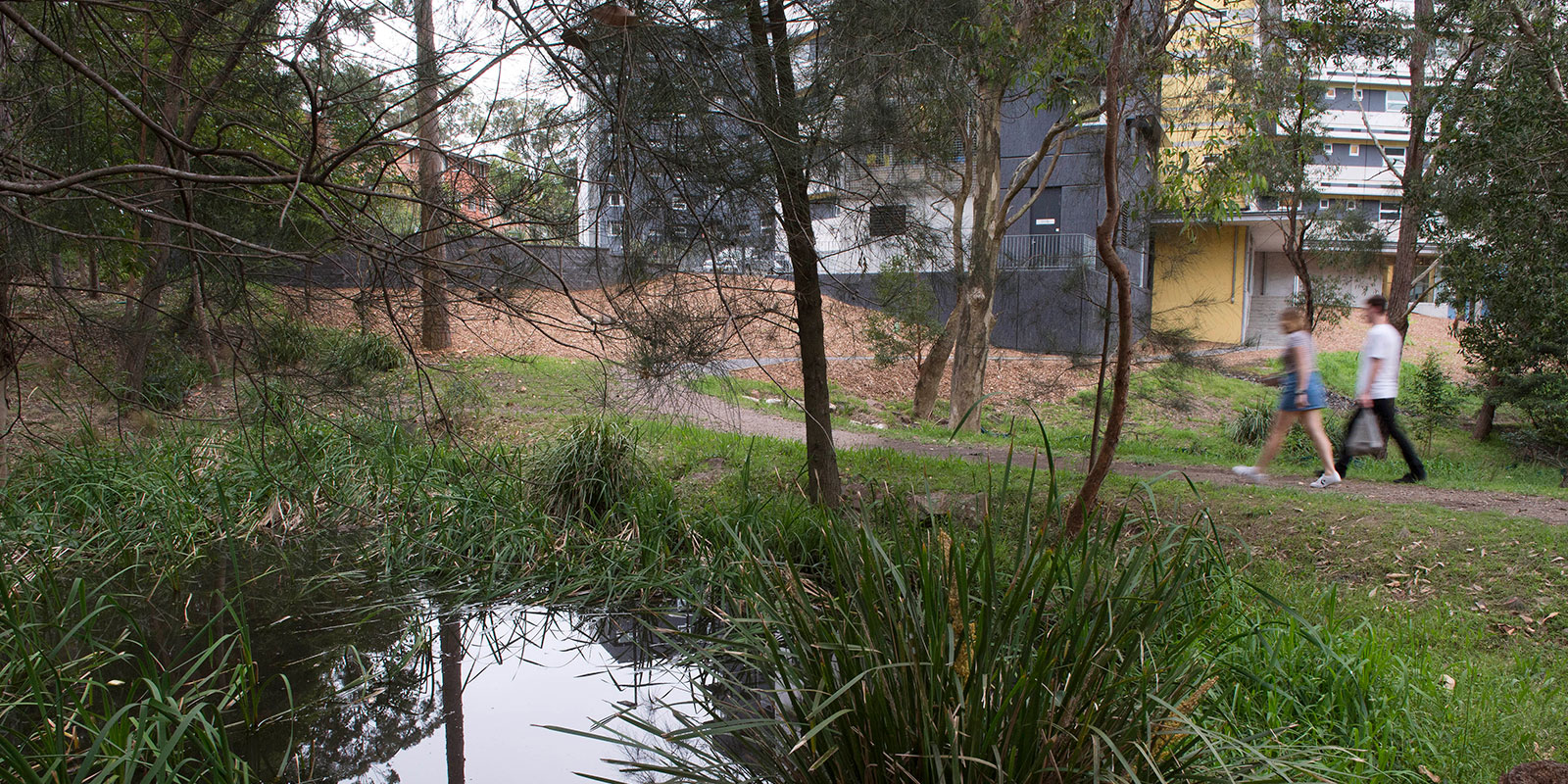

Goal 15:
Life on Land
Policy on Hazardous Waste Disposal
The University of Newcastle has formal policies and procedures to manage and dispose of hazardous materials safely and responsibly.
- The document Key Risk Area 3.3: Asbestos and Hazardous Materials Management (KRA 3.3) provides comprehensive guidance on identifying, assessing, controlling, and documenting asbestos, asbestos-containing materials, and other hazardous substances across University sites.
- It defines roles and responsibilities, risk assessment protocols, safe removal or containment practices, and record‑keeping for hazardous waste handling.
- The process ensures that hazardous materials are managed in compliance with regulatory standards, protecting staff, students, contractors, and the environment.
- Version 2 of the KRA 3.3 was issued in October of 2023 and remains active until review.
STEMM Building Project – Hazardous Waste Management
- As part of the planning for the STEMM building on the Callaghan campus, the project’s Waste Management Plan explicitly addresses hazardous materials and waste.
- Under “Waste Storage and Handling”, the plan states that demolition and excavation waste will be handled by licensed contractors and disposed of at approved waste recovery or treatment facilities.
- It also specifies that the handling, storage and transport of hazardous materials and waste must comply with relevant codes, guidelines, and the University’s hazardous materials management procedures.
Supporting Evidence: Policy & Practice Alignment
- The University maintains hazardous materials registers (for asbestos, lead paint, synthetic mineral fibres, etc.) at each campus, updated as of May 2024.
- The University has recently committed to placing signage across campus to indicate the presence (or potential presence) of hazardous materials, ensuring contractors, maintenance staff, and emergency services are aware of where these materials may exist.
- Laboratory safety protocols include strict rules on chemical waste disposal, such as forbidding certain categories (e.g. DG class 1 explosives, DG class 6.2 infectious waste, DG class 7 radioactive materials) unless explicitly permitted, and requiring formal requests and declarations for waste handling.
These examples show that the University of Newcastle does not just maintain policy documents — we embed hazardous waste control and disposal protocols in major building projects, campus operations, and laboratory safety systems, consistent with our Key Risk Area policy (KRA 3.3) and associated procedures.
| Definitions | |
|---|---|
| Asbestos | The asbestiform varieties of mineral silicates that belong to the serpentine and amphibole groups of rock-forming minerals and includes actinolite, grunerite or amosite (brown asbestos), anthophyllite, crocidolite (blue asbestos), chrysotile (white asbestos), tremolite, or any mixture containing one or more of these mineral silicates |
| Asbestos Containing Material (ACM) | Any material or thing that, as part of its design, contains asbestos. |
| Employer | Means the University of Newcastle (the University). |
| Executive Committee | Consisting of the Vice-Chancellor, the Deputy Vice-Chancellors, the Pro Vice-Chancellors, the Chief Operating Officer, Chief People and Culture Officer and the Chief Financial Officer, the University Secretary and the President of Academic Senate. |
| Friable Asbestos Material | Any material that contains asbestos and which, when dry, is in a powder form or may be crumbled, pulverised or reduced to powder by hand pressure. |
| Hazardous Materials | Materials used in the construction of buildings or plant that are known to have an increased risk to humans. |
| Leader / Supervisor | Any member of the University who is responsible for supervising staff and/or undergraduate or postgraduate students and/or for leading research projects. |
| Non-friable Asbestos Material | Any material that contains asbestos, other than friable asbestos material, including material containing asbestos fibres reinforced with a bonding compound. |
| Worker | Includes an employee, conjoint, student on work experience, contractor, sub-contractor, and volunteer. A person is a worker if the person carries out work in any capacity for the University or another person conducting a business or undertaking, including work as: (a) an employee, or (b) a contractor or subcontractor, or (c) an employee of a contractor or subcontractor, or (d) an employee of a labour hire company who has been assigned to work in the person’s business or undertaking, or (e) an outworker, or (f) an apprentice or trainee, or (g) a student gaining work experience, or (h) a volunteer, or (i) a person of a prescribed class. |
References & Related Documents
The following documentation is referenced in, or applicable to this Guideline:
The University of Newcastle acknowledges the traditional custodians of the lands within our footprint areas: Awabakal, Darkinjung, Biripai, Worimi, Wonnarua, and Eora Nations. We also pay respect to the wisdom of our Elders past and present.